Are you eager to make the most of your limited square footage? Look no further! Our 45 Small Living Room Ideas will provide you with epic hacks that can completely transform your compact space into a cozy and functional sanctuary. Say goodbye to cramped corners and hello to a comfortable, elegant retreat where you can unwind, entertain, and enjoy life.
Creating the perfect small living room isn’t an easy task, but with our ingenious tips, tricks, and insights, we’ll show you how to turn your small space into a big hit. From choosing the right furniture and color schemes to incorporating clever storage solutions and savvy design techniques – these Small Living Room Ideas have got you covered!
Ready to embark on this spacious adventure? Keep reading as we reveal some truly fantastic ways to breathe new life into your tiny living room. Let’s unleash the full potential of your humble abode and make every inch of it count!
Contents
In this article, we will delve into the captivating world of small living room ideas that are bound to leave you awestruck.
We understand that designing and decorating a compact living space can pose unique challenges, but fear not, as we have curated a collection of 45 jaw-dropping ideas that will inspire and empower you to transform your small living room into a stylish and functional haven.
From clever space-saving solutions to ingenious furniture arrangements, we will explore innovative techniques that maximize every inch of your limited space. Whether you seek practical storage solutions, artistic design inspirations, or tips on creating an inviting ambiance, we have got you covered.
So, join us on this exciting journey as we unveil these remarkable ideas that will help you make the most of your small living room and enhance your overall living experience.
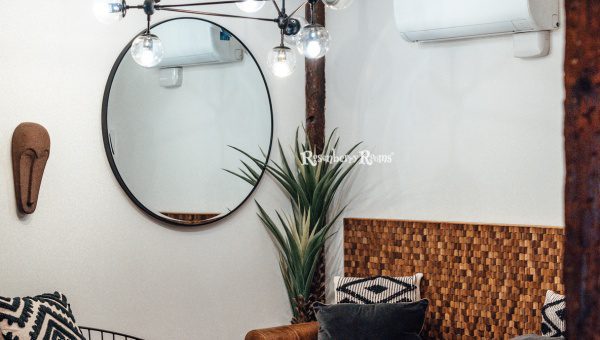
When decorating a small living space, the clever use of mirrors can create an illusion of depth and size. One such technique is using floor mirrors, which not only adds style to your interiors but double up the perception of space by reflecting natural light throughout the room. Let’s explore some tips on how to maximize this magical effect:
Opt for a large floor mirror that leans against a wall and has a minimal frame for best results. Remember that the bigger the reflective surface, the more spacious your room will feel! Consider mirrors with decorative frames if you’re aiming for a touch of sophistication.
Carefully choose where you place your floor mirror to maximize its effectiveness. Here are some ideas:
For added depth and dimension, try layering two or more floor mirrors together. This creates increased reflective surfaces while making a stylistic statement perfect for your chic living space!
By incorporating these techniques into your interior design plan, you’re sure to notice remarkable changes in your small living area.
Remember, by experimenting with floor mirrors and their placement, you can effortlessly transform your compact surroundings into an open and visually enlarged living space – all while adding aesthetic value! So go ahead and unleash some mirror magic in your home.
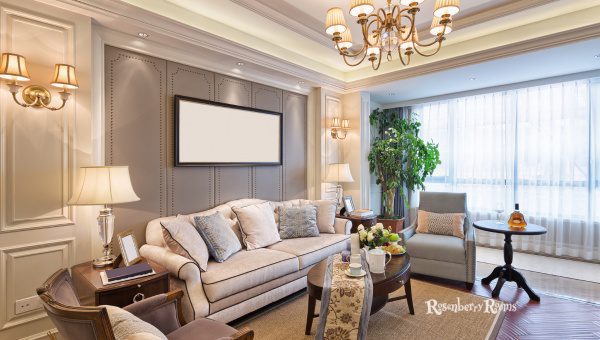
A key consideration in designing small living spaces is fostering a sense of fluidity and openness, which helps the room breathe. By strategically arranging your furniture and decor to promote unobstructed movement, you will enhance the visual appeal and create a more spacious environment. Here are some effective tips for achieving fluidity:
Being mindful of your furniture layout is essential. The goal is to arrange items in a way that makes the room feel more spacious and promotes easy traffic flow. Consider these points:
Keeping your space clutter-free reduces visual noise and maintains fluidity. Stick to these principles:
Incorporating transparent items like acrylic or glass adds lightness and promotes an uninterrupted sightline, preventing additional visual barriers in your living space. Examples include:
By prioritizing both function and aesthetics when designing your living area, you can effortlessly foster fluidity, alleviating any cramped feelings associated with smaller spaces. Embrace these principles and watch as your compact living space transforms into an inviting sanctuary that truly allows you to breathe!
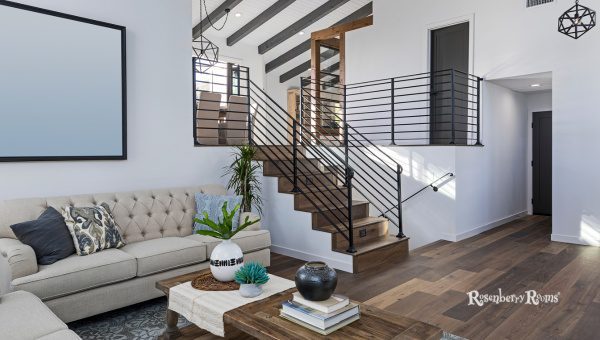
Focusing solely on the floor plan can lead to missed opportunities for efficient design. To capitalize on the available area, consider shifting your attention upwards by maximizing vertical space. The following tips will guide you through creating a functional yet stylish living room that embraces the height of your walls:
Installing floating shelves at various heights not only adds storage and display options, but it also draws the eye upward, giving an illusion of increased space. Opt for a ladder-style shelf or staggered cubes to create a visually appealing yet practical arrangement.
Tall narrow bookcases are perfect for adding function without dominating the room. Position them against a wall or use them to partition an open-plan living area while keeping a sense of openness.
A gallery wall arranged vertically guides the eye toward the ceiling, enhancing the perception of height in your living space. Combine various sizes and shapes of artwork while carefully curating your selection around a specific theme or color story.
Suspend planters from the ceiling and add greenery that cascades downwards. This natural touch adds vibrancy and life while taking advantage of underutilized vertical space.
Install eye-catching pendant lights or chandeliers that draw attention upward without overwhelming the room’s design scheme. Consider adjustable hanging lengths to control their impact on height perception.
By embracing these strategies, you will soon discover new possibilities in your small living environment. Remember to combine functionality with style as you maximize your vertical space – transforming your area into an inviting, spacious sanctuary that reaches new heights!
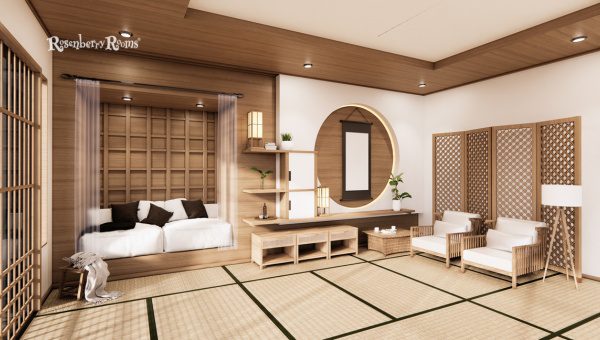
A small living space presents unique challenges and opportunities. One such opportunity is utilizing alcoves – those recessed nooks in walls – to make the most of every square inch. With a little creativity, you can transform these otherwise overlooked spaces into aesthetically pleasing and functional areas. Here’s how:
Maximize your storage capabilities by incorporating custom built-ins within your alcoves. These can be shelves, cabinets, or even a combination of both. With tailored measurements and designs, built-ins are an optimal solution for fitting into tight corners while providing additional storage.
Why not convert a wall recess into a compact yet fully functional home office nook? By adding a floating desk surface and some wall-mounted shelves, you’ll create an efficient workspace that doesn’t compromise style.
Showcase your favorite decor pieces or treasured collections by setting up elegant display shelves within your alcoves. This allows you to capitalize on vertical space while creating intriguing visual interest in any corner of the room.
Create a cozy reading nook by placing a comfortable chair or bench inside an alcove along with focused lighting and soft cushions. This adds character to the room while providing you with an intimate space for relaxation.
Ultimately, when it comes to small living spaces, it’s essential to think outside the box and look for ways to repurpose every feature of your home for maximum benefit. Embrace the architectural quirks like alcoves and watch as they transform from obstacles into invaluable focal points packed with style and function!
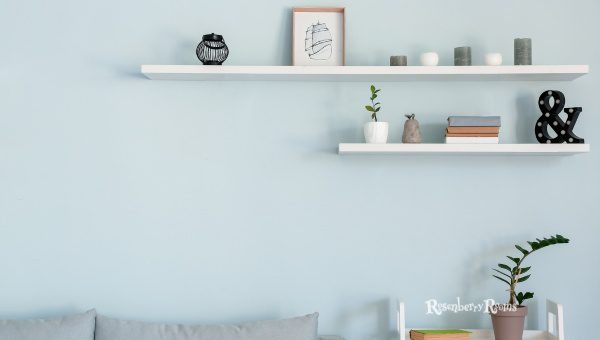
When working with limited space, it’s crucial to make the most of your vertical storage options, and one stylish solution is integrating a wall of shelves into your living room. This innovative approach not only declutters your living space but also adds an element of visual interest. Let’s dive into some essential tips to help you execute this idea with flair:
The first step in creating your shelving wonderland is to select the perfect system that suits your overall design aesthetic. Some popular options include:
Once you’ve installed your wall of storage, it’s time to expertly arrange your displayed items. The key here is balance and cohesion:
For added pizzazz, accentuate your shelf display with various decorative elements. Integrate personal touches such as framed photographs or travel souvenirs. Add some texture by incorporating small plants or vases.
A well-executed wall of storage can significantly impact the ambiance and functionality of a small living area. By selecting the suitable shelving system, arranging it thoughtfully, and adding chic decor pieces, you’ll emerge with a shelving splendor that exudes both style and substance in your compact living space!
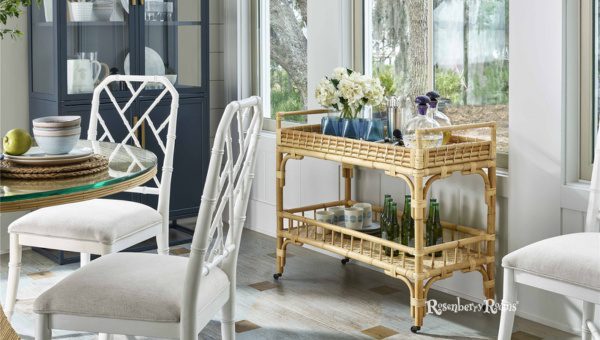
A stylish and functional solution for small living spaces, the humble bar cart has transformed into a versatile and sought-after accessory among interior design enthusiasts.
Integrating a bar cart can do wonders to elevate your interiors while preserving valuable floor space. Let us delve into some insightful tips on selecting the perfect bar cart for your home:
Select a bar cart tailored to your specific needs and preferences. Some key considerations include:
Bar carts aren’t just for libations! They can be repurposed as stylish storage or even as makeshift side tables! Here are some creative ways to adapt your bar cart:
The secret to making your bar cart blend seamlessly with your interior is styling. Follow these suggestions:
Don’t underestimate the impact of incorporating a bar cart into your humble abode. With its versatile nature, customizable features, and variety of applications, it is a trendy and practical addition to small living spaces. So go ahead and embrace the charm of the bar cart beauty!
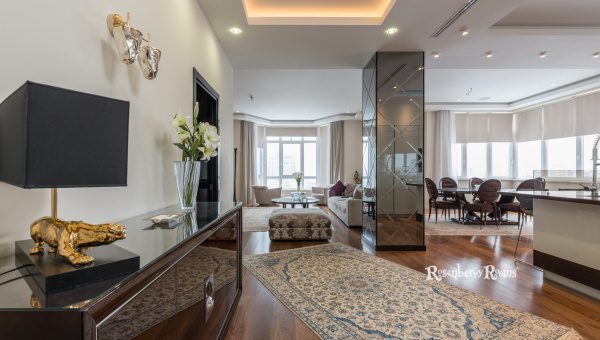
Mirrors hold a special place in interior design, not just serving as a functional accessory, but also as an essential tool to transform living spaces through their reflective properties.
From opening up small rooms to brighten up dark corners, they are undoubtedly integral in creating stylish and inviting interiors. Let’s dive into the world of mirrors and explore some creative and practical ways to use them:
There are several types of mirrors available that cater to different decorative needs. Some popular options include:
Mirrors perform various functions in design. Smartly using them can create stunning results:
Place a statement mirror above your fireplace or anywhere you need a focal point – its eye-catching design adds visual interest to any area.
With reflective reasoning, you can make educated decisions on incorporating mirrors into your home’s design effectively. Their versatility and undeniable ability to elevate the overall look make them an indispensable asset when crafting stylish spaces!
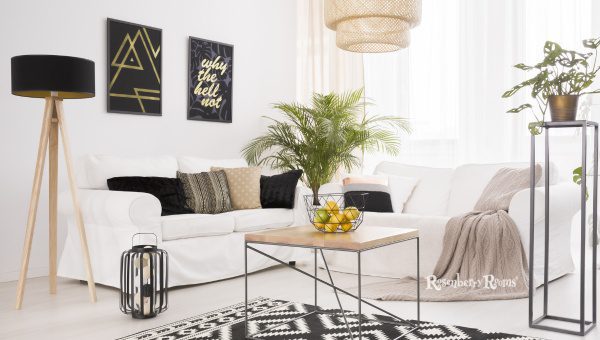
Natural light is a game-changer when it comes to making small spaces feel more open and inviting. It’s crucial to maximize the inflow of natural light and find ways to reflect this illumination throughout your living area. Below, we share insights on how to utilize natural lighting effectively for an airy, spacious atmosphere.
Making the most of your windows is crucial for enhancing natural light. Here are some tips:
Opt for a lighter color palette when decorating your living space. Light colors tend to amplify natural light better than darker shades. Do not shy away from using white walls or furniture – they’ll make your room feel brighter and more spacious.
Using mirrors and glass surfaces can create an illusion of increased space while reflecting sunlight across the room. Consider these ideas:
Adding potted plants or greenery breathes life into any space while subtly complementing the reflection of sunlight. Position plants near windows so they reflect incoming light and cast lovely shadows across the room.
By effectively implementing these techniques into your design approach, you’ll successfully harness natural illumination. As a result, you’ll transform your cozy living space into a bright, refreshing haven that feels both larger and more welcoming.
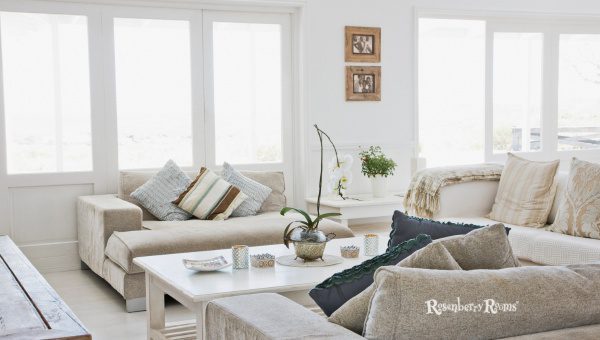
Creating a seamless and open living area often relies on manipulating the physical structure of your home. This means opening up walls not only visually but also architecturally. While this requires additional effort and investment, the outcome can be nothing short of spectacular! Let’s discuss how opening up walls can maximize space in your interiors.
Demolishing or partially removing the barriers between rooms creates an open floor plan that promotes fluidity, uninterrupted views, and versatility. This cohesive design encourages communication, multitasking, and a brighter ambiance as natural light freely flows from one room to another.
To ensure that you don’t compromise the structural integrity of your home during the renovation, it’s vital to work with an architect or professional builder before tearing down any walls.
Ensure they are non-load-bearing–which doesn’t support the weight above them–or have the load-bearing walls replaced with proper structural reinforcements.
Maintaining functionality and style while separating certain sections of your living space is achievable using pocket doors or glass dividers. These save space by sliding into or along the wall when opened while retaining privacy when closed.
For a more flexible approach without resorting to full-blown construction projects, opt for decorative partitions like freestanding screens, bookshelves, or folding dividers that add texture and character to your space.
Allow yourself some freedom in design by opening up walls and reimagining your floor plan! By skillfully eliminating barriers between rooms and giving thought to each detail of the process, you can create a spacious haven that simultaneously enhances both aesthetics and practicality within your home.
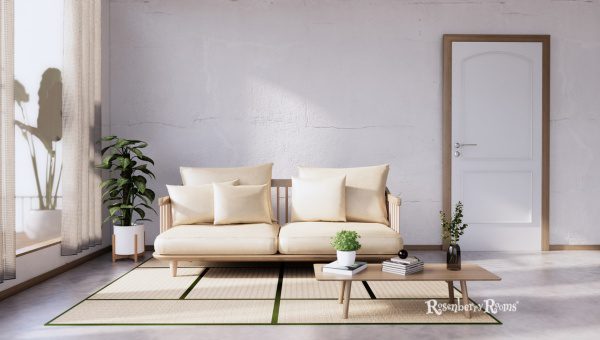
When it comes to small living spaces, selecting the right sofa is crucial as it often becomes the focal point of your room. Opting for a style with legs not only adds an air of elegance but also creates an illusion of spaciousness by making the floor more visible. Let’s take a closer look at some guidelines to follow when choosing your perfect sofa:
The ideal sofa features raised legs and showcase the floor underneath, ensuring your living room looks lighter and more open. A mid-century modern or contemporary-styled sofa with tapered legs often works best in compact areas.
It’s important to consider materials that complement the airy design of a leggy sofa. Opt for lightweight fabrics like linen or cotton instead of heavy materials like velvet or leather. This will add to the feeling of lightness and space all around.
While selecting your sophisticated sofa, choose a color that visually opens up the space. Sticking to light and neutral colors will create an illusion of grandeur without overwhelming your small living room.
Be mindful of proportions when choosing your leggy sofa. Keep in mind its overall size in relation to other key pieces within your space, such as coffee tables or sideboards, ensuring there is enough airflow around each piece for an open feel. Consider using this handy guide when measuring your desired sofa dimensions.
Integrating a stylish sofa with raised legs into your small living room design not only enhances its visual appeal but also helps create an atmosphere of openness and comfort – something we all crave in our cozy sanctuaries! With these tips on hand, you’re now set to make an informed choice for that perfect sofa that will ultimately bring life to your compact living space.
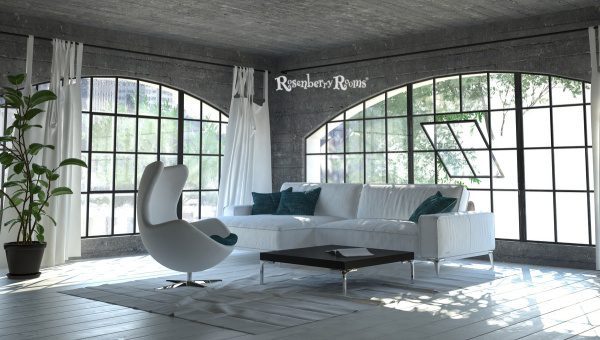
A simple and effective way to give your small living space a cohesive and visually appealing look is by opting for a monochromatic color scheme. This design approach involves using different shades, tones, and tints of a single color in your décor.
By sticking to one color palette, you can create a sense of harmony and unity in your living room while making it appear more spacious. Let’s dive into some tips to achieve this aesthetic:
Choose a base color that resonates with your personal style and preference. Neutral colors like gray, beige, or white are popular choices for small spaces as they create an airy and open atmosphere. However, you can also opt for bolder colors like blue or green if it aligns with your taste.
To add depth and interest to your monochromatic space:
Prevent monotony by incorporating accent pieces in contrasting colors or metallics. For example:
Mastering the art of Monochromatic Majesty is all about balancing simplicity with style. By sticking to one primary color while playing with shades, tones, textures, and accents – you’ll create a refined living space that feels much larger than it actually is! So go ahead and explore this elegant design approach that celebrates simplicity and sophistication in harmony.
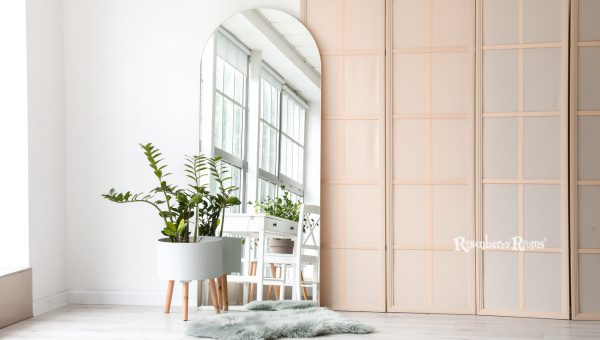
When decorating a small living space, the clever use of mirrors can create an illusion of depth and size. One such technique is using floor mirrors, which not only adds style to your interiors but double up the perception of space by reflecting natural light throughout the room.
Let’s explore some tips on how to maximize this magical effect:
Opt for a large floor mirror that leans against a wall and has a minimal frame for best results. Remember that the bigger the reflective surface, the more spacious your room will feel! Consider mirrors with decorative frames if you’re aiming for a touch of sophistication.
Carefully choose where you place your floor mirror to maximize its effectiveness. Here are some ideas:
For added depth and dimension, try layering two or more floor mirrors together. This creates increased reflective surfaces while making a stylistic statement perfect for your chic living space!
By incorporating these techniques into your interior design plan, you’re sure to notice remarkable changes in your small living area. Remember, by experimenting with floor mirrors and their placement, you can effortlessly transform your compact surroundings into an open and visually enlarged living space – all while adding aesthetic value! So go ahead and unleash some mirror magic in your home.
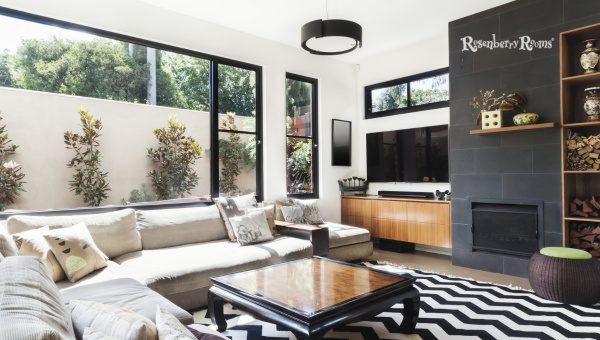
In today’s world, television often becomes the focal point of our living spaces. However, in a small room, allowing the TV to dominate the area can make it feel cramped and cluttered.
To create a more balanced and inviting atmosphere, consider implementing strategies to minimize your television’s visual impact. Here are some tips to help you achieve this:
There are several creative ways to camouflage your television within the room:
Instead of mounting your TV on the wall, consider placing it on an existing piece of furniture like a console table or dresser. This will help blend it into your decor while saving wall space for artwork or other design elements.
Establish other captivating focal points within your living space to divert attention from the television:
By following these simple steps, you can successfully reduce your television’s visual weight while making the most of limited space.
Embrace this philosophy of “less is more,” transforming your small living area into a harmonious haven where one’s attention isn’t solely drawn to a gigantic screen – this is what truly defines contemporary interior design!
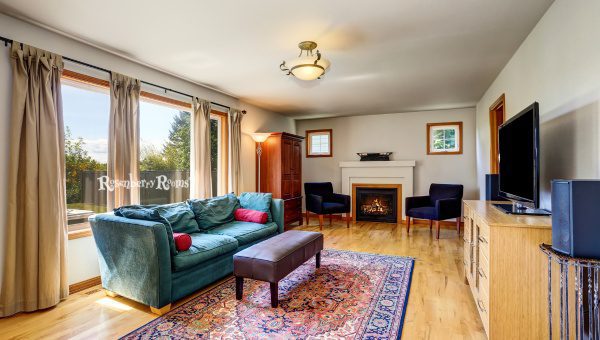
While statement rugs might seem tempting and exciting, they can make your small living space feel cluttered and cramped. In compact spaces, it’s essential to maintain a sense of openness by opting for understated flooring choices that emphasize simplicity over bold patterns.
Here’s how you can keep the focus on subtlety rather than extravaganza:
When looking for subtle rugs or carpets, focus on neutral colors, such as grays, beiges, and whites. A gentle monochromatic palette allows your space to feel more expansive and open so that every component flows together seamlessly.
Instead of elaborate prints or colors that can visually overwhelm a small room, consider using rugs with subtle geometric patterns or low-key textures. These designs capture visual interest without overpowering the overall aesthetic.
Choosing the right rug size is just as vital as selecting the appropriate pattern and color. Opt for rugs large enough to accommodate major pieces of furniture—like a sofa or dining table—while leaving a few inches of bare floor around the edges for added spaciousness.
If you’re still craving some bold elements in your space, balance them out with statement accessories like throw pillows or artwork. This approach creates a more curated look while preventing an overload of competing visual stimuli.
Subtlety trumps show when it comes to maximizing the perceived size of your small living room. By acknowledging the power of neutrality in rugs, you have already set yourself up for success!
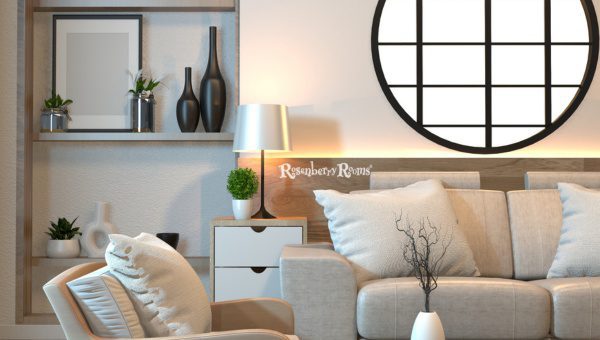
Establishing a focal point within your living space is crucial to create visual interest and to make the best use of available space. A focal point not only sets the tone for your room’s design but also draws attention to a particular area, allowing other elements to take a complementary role.
Here are some tips on creating an effective and stylish focal point in your small living area:
When choosing the perfect centerpiece, opt for elements that are both visually appealing and practical. This can be achieved through stunning artwork, bold wallpaper, or statement furniture items like sofas or accent chairs. The key is to express your personal style while making it the star of the show.
Once you have determined your focal point, arrange furniture around it to maximize space and enhance visual flow. For example:
Elevate the impact of your focal point by skillfully using accessories such as throw pillows, decorative accents, or lighting fixtures. Choose statement pieces that harmonize with their color, pattern, or theme for optimal effect.
By putting these ideas into action, you’ll discover how incorporating a focal point could breathe new life into your small living area – making it feel more organized and inviting than ever before.
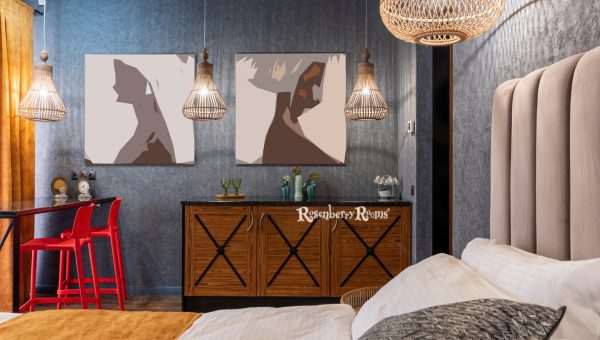
In the realm of interior design, small spaces can benefit immensely from the right artwork. By incorporating smaller pieces, you can create an intimate, cozy atmosphere while adding visual interest to your living space.
Let’s delve into some expert tips and insights on making the best use of small artwork for your interiors.
Begin by carefully selecting the right pieces that complement each other and your overall decor. You may choose to focus on a theme, color palette, or artistic style to create a cohesive and meaningful gallery.
When it comes to arranging small artwork, layout options are plentiful:
Identify wall spaces perfect for displaying your small artwork pieces. Some inspiring locations include:
Pro-tip: Keep in mind proper viewing heights when hanging your art close to eye level!
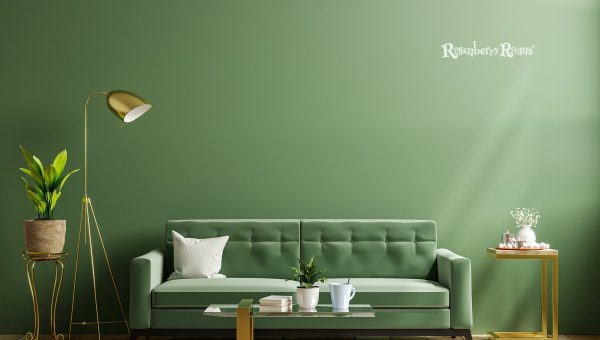
In the realm of small living room design, choosing a low sofa can be an innovative strategy for creating a sense of openness and maximizing the available space.
This modern, stylish approach involves selecting lower-height sofas and other furniture that remain close to the ground; allowing you to effectively tweak your interiors and make them appear more spacious. Let’s dive into the key advantages of keeping it low:
Low sofas allow for increased vertical clearance, giving your room an airier feeling with more headroom. This can help emphasize taller elements in the room like bookshelves and wall art, drawing the eye upward and adding dimension to your living area.
Low sofas complement contemporary interior designs beautifully. Their sleek and minimalistic appearance aligns perfectly with modern aesthetics, easily fitting into various styles such as Scandinavian or mid-century modern.
While regular-height sofas are designed for sitting upright, low sofas often encourage lounging and reclining. This informal seating arrangement fosters more intimate conversations among friends and family while also introducing cozy vibes into your living space.
To make the most out of this approach, consider these additional tips:
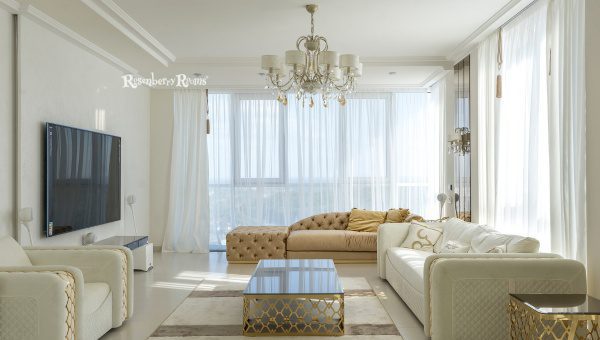
Natural light is one of the most desired elements in any home, especially when it comes to small living spaces. By harnessing sunlight, you can enhance the visual quality of your interiors, making them seem more spacious while also improving your overall well-being. Let’s delve into some practical tips on how to optimize natural light in your small living area:
The first step to optimizing natural light is maximizing the use of your existing windows. Here are a few approaches to consider:
Incorporate colors and materials that effectively reflect and bounce sunlight throughout your room. Some ideas include:
Take inventory of your space’s layout and plan it strategically to minimize any possible shadows cast by furniture or décor items:
Remember, by optimizing natural light in your space through window care, color selection, and strategic furnishing arrangements, you can create an open atmosphere that feels both rejuvenating and inviting.
Start harnessing the power of sunlight today, and brighten up your small living space for a more energizing and comfortable experience.
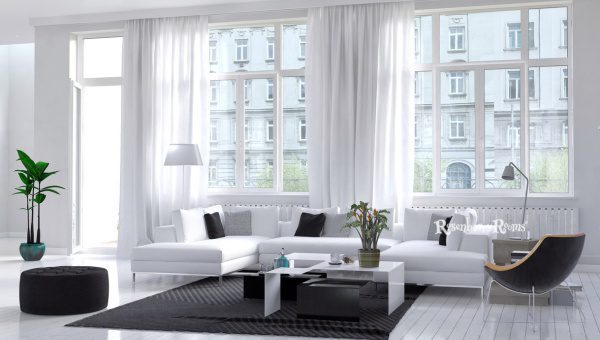
A black-and-white color scheme can bring both boldness and simplicity to your small living space. This timeless combination creates visual harmony, making your room feel ordered, cohesive, and even more spacious. Let’s delve into some tips on executing this monochromatic marvel successfully:
Having a balance between black and white is crucial for achieving visual interest. You can create this contrast by:
Adding patterns can help break the stark appearance of a solely black-and-white room. You can opt for:
Don’t limit yourself to just the purest forms of black and white. Include various shades of gray or even off-whites in your design plan for added depth without straying from the minimalist aesthetic.
With these tips at hand, committing to a black-and-white color scheme for your small living space will transform it into an elegant yet functional haven!
Remember that less is more when designing within these color constraints – avoiding clutter at all costs will ensure an uncluttered environment that feels both bold in style and enchanting in its simplicity.
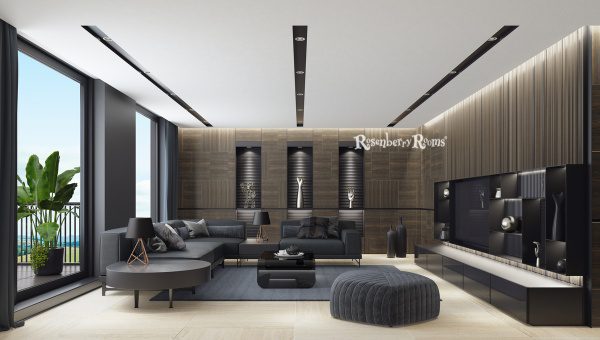
Creating a visually stunning and cohesive space is essential when designing a small living room. Incorporating an anchor piece, or a single statement piece of furniture or artwork, can help tie the whole design together and draw the eye to a striking focal point. Here’s how you can use an anchor piece effectively in your interior design:
When picking an anchor piece, consider its size and style in relation to your existing décor. This could be a bold sofa, large artwork, or even a patterned rug that stands out from the rest of the room. It’s essential that your chosen piece commands attention without overwhelming the space.
Once you’ve decided on your perfect anchor piece, arrange other furniture and accessories around it to create a harmonious setting:
Considering the Purpose of Your Anchor Piece When selecting an anchor piece, you should consider its functional role within your living space. A statement sofa not only looks great but also serves as a comfortable seating area. Similarly, a large bookshelf or wall unit can store household items while providing a bold visual focal point.
By using an anchor piece as a design foundation, you can more easily establish an eye-catching and cohesive look for your small living room. Whether it’s functional furniture or unique artwork, be sure to choose a piece that truly represents your style and decor aspirations.
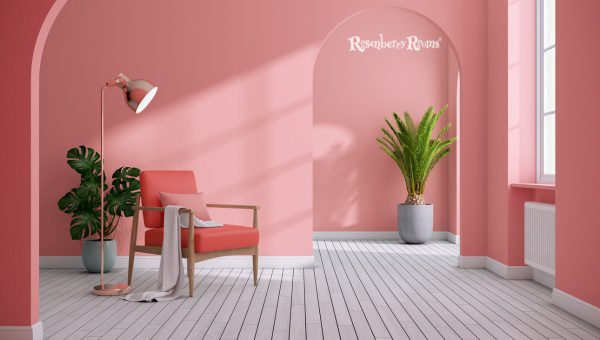
Implementing a variety of textures is an effective way to elevate your small living space and make it more visually dynamic. Layering different materials and finishes adds depth, warmth, and character to any room while creating an inviting atmosphere. Here’s how you can achieve a texture triumph:
Experiment with materials such as wood, metal, ceramics, textiles, and more. The key is to mix and match textures in a thoughtful manner that complements your existing décor.
While it’s important to introduce a range of textures, avoid overloading the space with conflicting elements. Remember to balance using a thoughtful combination of softer textures (think cozy knits, smooth wood) with harder textures (like shiny metals or glass).
To make texture layering coherent and sophisticated in your small living space, maintain harmony by using a cohesive color palette throughout the room. This ensures that even though different materials are used, the overall aesthetic remains unified and refined.
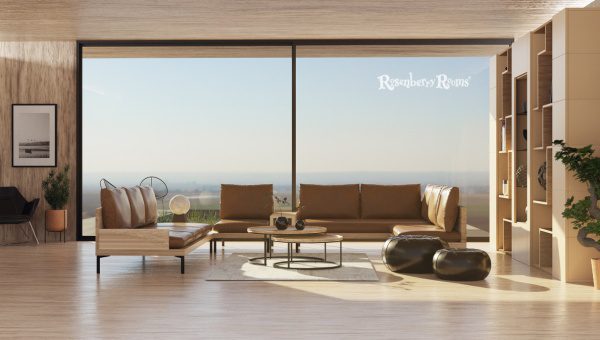
For small living spaces, every design choice should focus on creating an open, airy atmosphere. One such choice involves embracing bare windows by opting for minimal or even no window treatments. After all, losing those heavy drapes can dramatically transform a room.
Here’s how you can create the illusion of spaciousness with bare windows:
Allowing natural light to freely cascade into your space can make it appear more expansive, bright, and welcoming. Discarding heavy curtains or thick blinds allows sunlight to pour in unrestricted, inviting an unhindered visual flow from the interior to the exterior of your home.
By leaving your windows unadorned or minimally decorated, you create simplified silhouettes that reduce visual clutter. This sense of openness and fluid
it can quickly make a small room feel larger and more inviting.
If opting for window treatments, choose less bulky options such as:
Decorating with clean and simple lines helps promote a sense of continuity, giving the eyes an uninterrupted view throughout your space. As windows often take up a large portion of the walls, keeping them bare allows for unbroken lines that seamlessly blend into your interiors.
Experiment with minimalistic or nonexistent window treatments to create an airy atmosphere that’s both stylish and functional. Say goodbye to those heavy drapes, and watch as your petite dwelling transforms into a brighter and more spacious haven!
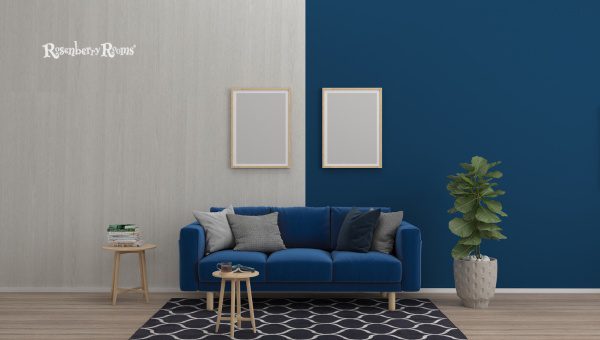
It’s essential to strike a balance between functionality and style. One simple yet effective way to infuse a burst of life into your interiors is by incorporating colorful, vibrant statement art pieces. These not only capture the eye but also add personality and depth to your surroundings.
Here’s how you can successfully introduce statement art into your small space:
When choosing statement art, consider the mood you want to create in your room – be it relaxed, energized, or inspired.
Experiment with various styles like abstract, pop art, or impressionism, and don’t be afraid to get bold with color. Unique quotes or typography can also make for attention-grabbing pieces. Just make sure the artwork aligns with your room’s overall style!
Don’t shy away from large pieces in small spaces – they can create a strong focal point and elevate the room’s feel. Consider the wall space available and select a painting that fits comfortably without overcrowding.
Proper positioning of your statement art is crucial. Here are some tips to make it stand out:
Use contrasting elements like wall color, furniture placement, and lighting effects. For instance, if your walls are light-toned, go for bold artwork colors that “pop.” Alternatively, if you have dark walls, choose light-colored art or metallic accents to create a striking juxtaposition.
Statement art serves as a versatile solution to not only enhance interior design but also imbue energy and personality into cozy living environments. So go ahead and confidently express yourself through your artwork choices!
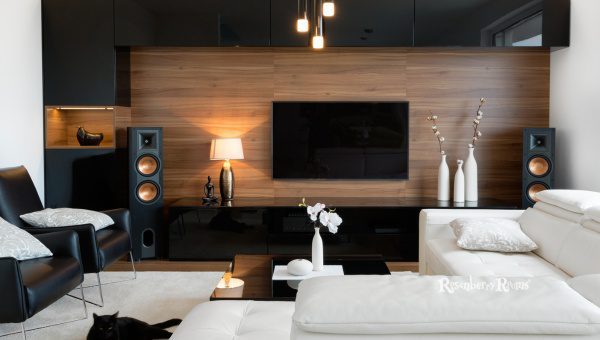
A well-lit space is the key to making your small living room seem larger and more inviting. By adding layers of light, you not only enhance the functionality of your space but also create an ambient atmosphere that adds warmth and depth.
Let’s dive into the world of illumination layers and how they can diversify your lighting options.
There are three main layers of light to consider when designing your illuminating plan: ambient, task, and accent lighting. Each layer serves a distinct purpose and contributes to the overall atmosphere:
Selecting suitable fixtures for each layer is crucial to achieving your desired effect. Here are some tips:
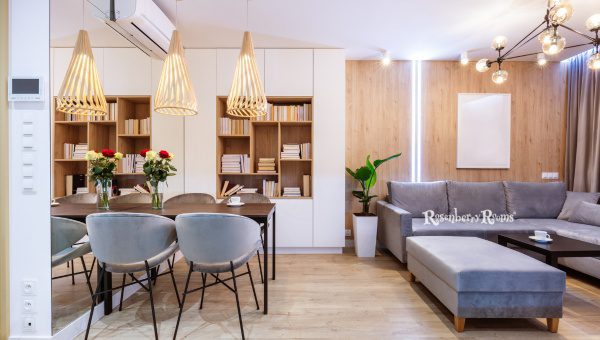
Wall light fixtures, or sconces, can not only contribute to the style and ambiance of your small living room but also save some precious space that would otherwise be occupied by floor lamps. Integrating well-placed sconces in your design can elevate its aesthetics while serving various practical functions.
Let’s discuss how to incorporate these sophisticated lighting options in your small space:
The optimal positioning of sconces is crucial to effectively utilizing wall light fixtures. Here are a few suggestions:
Choose sconces that match the overall design theme of your living space. For instance:
Consider adding dimmer switches for heightened control over the intensity and mood created by your sconces. This allows you to customize the lighting based on activities or ambiance preferences.
The strategic use of sophisticated wall light fixtures can breathe life into any small space by conserving floor space and offering versatile lighting solutions. Embrace the elegance and practicality offered by sconces to create a comfortable atmosphere tailored to your unique design tastes!
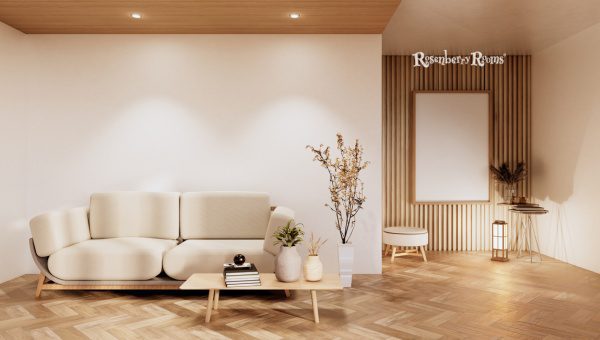
One of the most effective ways to make a small living space appear larger is by embracing a dynamic duo – contrasting your walls and floors. This design technique not only adds visual interest but also creates an illusion of depth, making your room feel more spacious. The key is to strike a balance between light and dark elements in your living space.
Let’s dive into some of the best ways to create an effective contrast between your walls and floors:
To achieve the perfect contrast, opt for complementary colors that accentuate each other without being too overpowering. For instance:
Keep in mind that sticking to a simple color palette is essential when pairing contrasting walls and floors.
Experimenting with textures and patterns can add character to your living space while emphasizing the contrast between the walls and floors:
When contrasting your walls and floors, consider these golden rules:
Implementing these tips will help you create an inviting environment where contrasting elements work in harmony, making your small space feel larger and more stylish! Embrace this dynamic duo design strategy to give your compact living area an instant uplift while maximizing its potential – both in space and style.
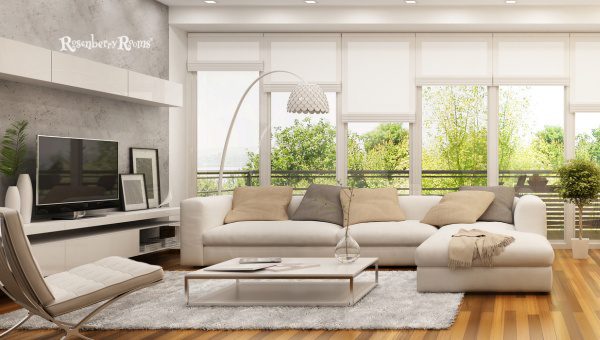
In the quest to maximize space in a small living area, modular storage systems are the ideal solution as they allow for personalization and adaptability. These systems come in a variety of sizes, shapes, and styles to suit your specific needs while ensuring your space remains organized and clutter-free.
Let’s delve into some tips for using modular systems as smart storage solutions in your home:
Opt for modular systems that can be easily reconfigured or expanded according to your changing needs. This flexibility makes it easy to alter your storage solution as you acquire new items or move things around. Consider options like IKEA’s EKET series or MUUTO’s Stacked Storage System.
Look for pieces that serve multiple purposes, such as shelving units with built-in desks or seating options that include hidden storage compartments. This will help streamline your living area while keeping essential items within reach.
Vertical storage is crucial in a small living room. Choose tall modular shelving units with adjustable shelves to accommodate different-sized items and make the most of limited floor space.
In addition to functionality, consider aesthetics when choosing a modular system. Opt for materials and finishes that complement the overall design of your home. You could even mix and match modules in various colors and textures to create a dynamic focal point.
By incorporating these smart storage solutions into your compact living space, you’ll find yourself equipped with versatile, stylish, and efficient organization options – all thanks to the power of modular systems.
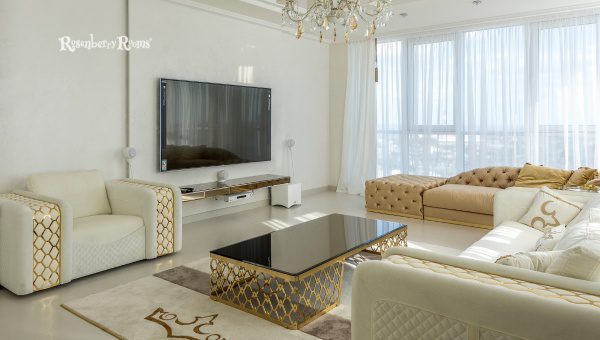
Coffee tables often serve as the focal point and functional hub of your living room. Selecting a coffee table with a light base in small spaces can create an airy vibe and provide a visual breathing room. Here are some essential tips for achieving that airy elegance with coffee tables while maintaining style and function:
Opt for materials that project a sense of lightness, such as:
When choosing the perfect coffee table with a light base for your small living room, some factors to consider include:
Search for tables with thoughtful design features which maximize functionality such as:
Elevate your small living space by opting for an elegant coffee table featuring a light base. By considering materials, size, and shape, along with functionality, you’ll expertly enhance both visual appeal and practicality within your cozy abode—ultimately strengthening your home’s sense of airy elegance.
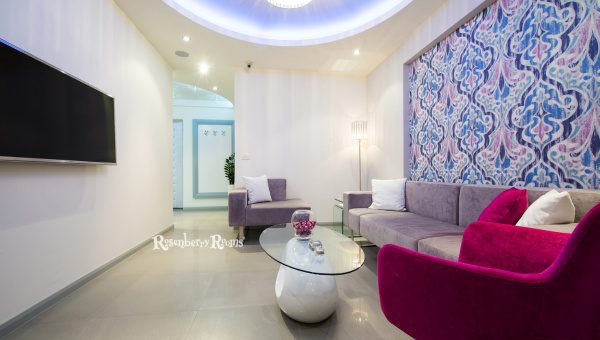
When it comes to enhancing your small living space, adding a touch of elegance has never been easier. Vibrant vases featuring various materials, colors, and shapes can bring life and sophistication to any room. In this guide, we will explore ways to incorporate these classic elements into your home decor.
Selecting the perfect vase is essential for both aesthetic appeal and functionality. Keep in mind these factors when choosing your new statement piece:
Take advantage of your chosen vase’s potential by trying different floral or non-floral arrangements. Follow these suggestions:
Contrasting sizes and shapes of vases can add dimension to any area. Group them together as a centerpiece on tables or along shelves using these tried-and-true tips:
Incorporating vibrant vases into your living space instantly adds charm and character. Remember that by selecting the right piece and displaying them creatively, you can easily elevate your decor from drab to fab! Let these time-honored decorating essentials inspire you into designing a more sophisticated and classy abode.
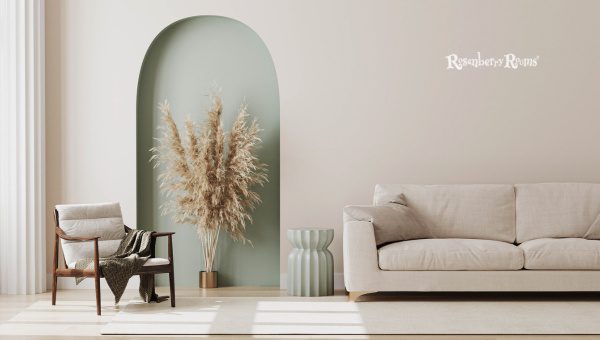
When it comes to designing a small space, color selection plays a crucial role in enhancing the overall ambiance. One such versatile color option that often goes underappreciated is beige. This neutral hue offers warmth and sophistication, and, most importantly, harmoniously pairs with various design elements while making your space feel more open and inviting.
Let’s dive into how to best embrace beige in your small living area:
Beige comes in several different shades – from pale creams to rich tans. When selecting the perfect hue for your small space, consider factors such as natural light exposure and existing furniture colors.
For spaces with ample sunlight, opt for warmer shades of beige; alternatively, cooler beiges can brighten up spaces lacking natural light.
Beige works beautifully with many other colors and materials:
Experimenting with textures using beige as your primary color adds depth and intrigue:
This versatile color allows you to create an elegant yet inviting environment where furnishings and decorative pieces can genuinely shine—providing both style and spaciousness for your compact living quarters.
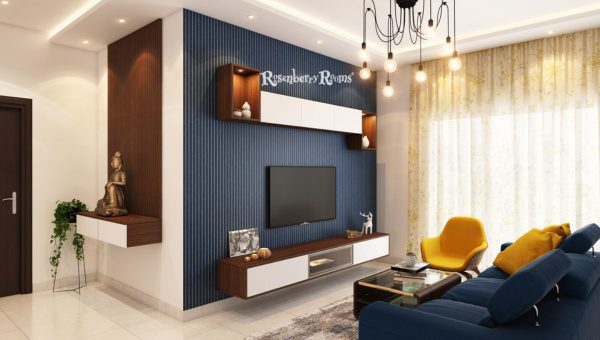
In interior design, particularly within small living spaces, it’s essential to play with different shapes, heights, and depths to create visual interest and add personality to your room. Mixing different size furniture and decorations is a surefire way to maximize your space while achieving a dynamic aesthetic.
Let’s explore how you can successfully mix different heights and depths within your cozy abode:
Create an appealing focal point in the room by strategically placing taller or statement furniture items near the center or back wall. This could be a bookshelf, an armoire, or even an attractive floor lamp.
Build around this central piece with lower-height items like a coffee table or seating arrangements.
Make use of stylish groupings by clustering items at various heights. Try combining a tall floor plant with shorter accessories or nesting tables of different sizes together. This creates an interesting visual hierarchy that will draw focus away from the limited amount of space.
Incorporate vertical lines into your living space using tall artwork, narrow bookcases, or floor-to-ceiling storage units. This will make the walls appear taller and continue the theme of variety throughout your design.
Layer textures by adding items like wall shelves at multiple heights or hanging artwork above a couch for added depth.
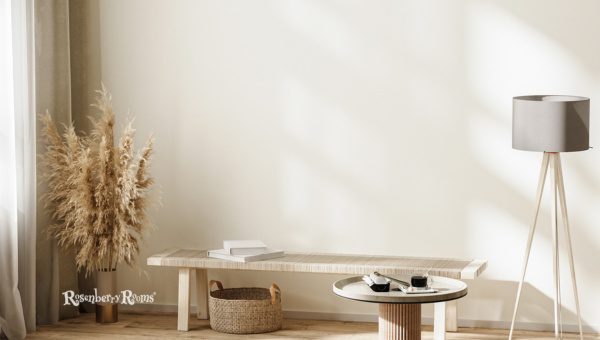
Neutral walls are a necessity when it comes to small space living. They not only make a room feel airy and spacious but also create a soothing atmosphere that promotes relaxation. By choosing a neutral backdrop for your walls, you establish the perfect canvas to showcase statement furniture and eye-catching accessories.
Selecting the right neutral color is crucial to achieving the desired effect. Some popular neutral hues include:
Experiment with swatches before committing to finding your ideal selection! Remember to consider natural light in your space, which can affect how the color looks throughout the day.
While keeping walls neutral is essential, adding splashes of color through accessories elevates your interiors. Try incorporating vibrant cushions, patterned rugs, or statement art pieces that bring character to the room – without overwhelming it!
If you introduce different textures through furnishings or accessories, you can prevent your neutrals from appearing dull or uninteresting. Mixing materials like soft linen against harder surfaces like wood or stone lends depth while enhancing visual appeal.
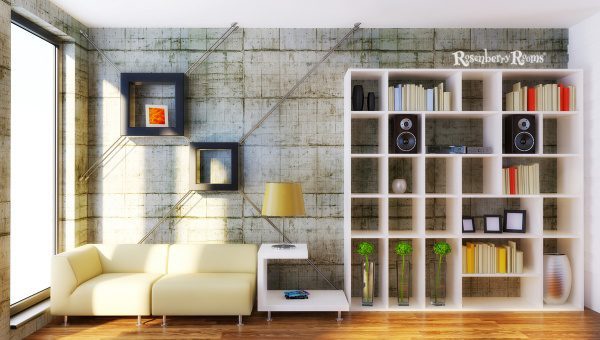
Finding innovative storage solutions that provide ample room without compromising on style is key. Open shelving offers a practical yet aesthetically pleasing option that makes any room feel more spacious and airy. Here are some creative ways to incorporate open shelves into your home:
Selecting the right materials for your open shelves is critical for achieving the desired level of elegance. Opt for sleek and simple materials like glass, metal, or floating wood shelves to create an effortlessly chic look in your small living space.
While open shelves are great for displaying books, don’t be afraid to experiment with other decorative elements. Here’s how you can add variety to your open shelving:
The trick to open shelving lies in its endless customization possibilities. Mix and match different shapes and sizes to achieve a visually balanced look:
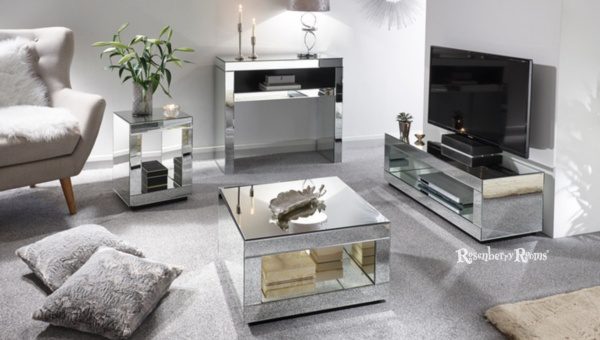
Incorporating mirrored furniture into your small living space is an effective and stylish way to create an illusion of additional room. Similar to using floor mirrors, these elegant pieces reflect light and open up the space visually. Here are some awesome tips to help you make the most of mirrored furniture in your cozy abode:
Before investing in mirrored furniture, think about which pieces will best enhance your living area:
To avoid visual clutter, maintain a balance between mirrored and non-mirrored furnishings:
Enhance your mirrored furniture by adding well-curated accessories:
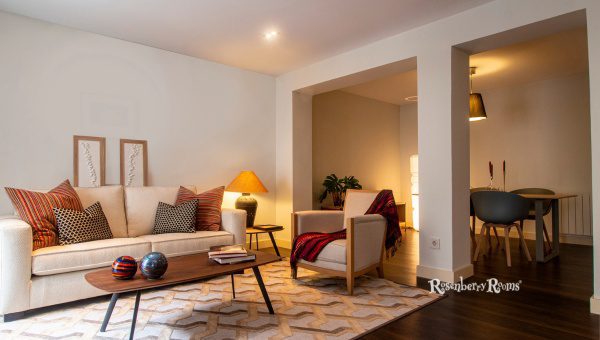
Versatile furniture can be a game-changer. Incorporating multi-functional pieces will not only save valuable floor space but also bring exceptional functionality, style, and convenience. Let’s dive into some suggestions on how to choose the perfect multipurpose masterpiece for your compact living area:
Opt for furniture that offers built-in storage solutions. This helps to reduce clutter and enhance organization. Some options include:
Choose pieces that can effortlessly transition from one use to another. These multi-purpose items add flexibility to your daily routine and adapt easily to various needs. For example:
Maximize your room’s vertical space by selecting items that effectively utilize it without compromising on style. These include:
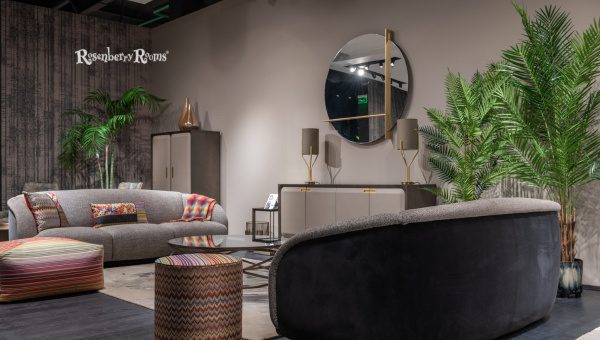
Discover the art of enhancing your small space by strategically placing mirrors to create a sense of depth and width. The wise use of mirrors can achieve an illusion of spaciousness, allowing you to feel more at ease in your cozy abode.
Placing mirrors directly opposite windows expands the visibility of natural light, which in turn gives the impression that the room is larger and brighter. It also boosts positive energy in your living area, supporting a more pleasant atmosphere.
Strategically placing mirrors opposite windows in small spaces is a simple yet impactful way to maximize illumination and create an expansive atmosphere. With these tips and tricks, you’ll be able to transform your cozy interior with minimal effort and investment.
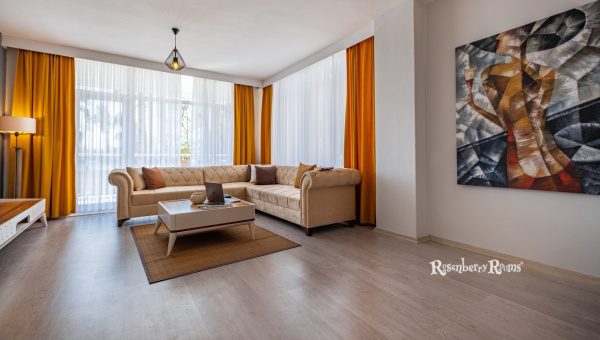
Art plays a crucial role in transforming a living space, and when we’re talking about small interiors, being strategic with artwork can make all the difference. Choosing the right pieces and finding the perfect placement will prevent your living area from feeling cramped while providing visual appeal.
Here are some artful tips to consider for your compact room:
Selecting appropriately-sized artwork is essential in small spaces. Oversized pieces may overpower the room, while tiny artworks can get lost. Look for medium-sized art pieces or create a gallery wall using several smaller items that don’t consume too much wall space.
Choose artwork that complements your existing color scheme, creating harmony and visual flow within the room. Opt for colors that evoke feelings of relaxation, such as calming blues or warm earth tones.
Create added depth by strategically placing art throughout your space:
Consider incorporating multipurpose items like decorative mirrors and sculptural shelves that serve both aesthetic appeal and practical use – perfect for enhancing small spaces!
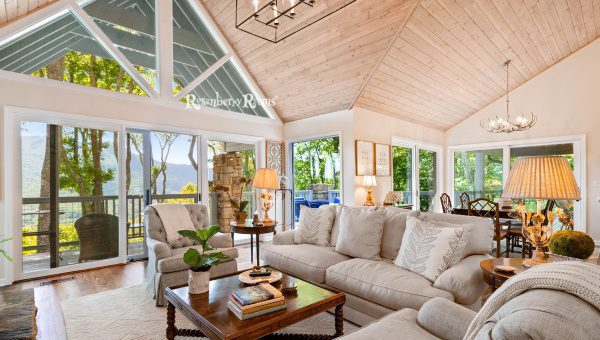
An elevated design can significantly enhance your small living space and create a sense of airiness. This technique involves hanging various elements in the room, which not only frees up valuable floor space but also adds visual intrigue.
Read on to learn how hanging certain objects or decor can improve the overall ambiance of your compact area:
Wall-mounted shelves are both stylish and practical. They eliminate the need for bulky floor shelves while providing ample display and storage options. Choose sleek, floating shelves or ones with decorative brackets to fit your aesthetic preference.
Embellish your walls with a gallery arrangement of art, photos, or mirrors for a personal touch. Mixing sizes and shapes adds an artistic flair while maximizing vertical space.
Bring nature indoors by incorporating hanging plants into your interiors. They purify the air, inject color into the room, and promote a tranquil atmosphere. Opt for low-maintenance plants like Pothos or Spider Plants that thrive indoors.
Consider incorporating hanging chairs, swings, or hammocks as unique seating options that save floor space while adding a fun element to your living area.
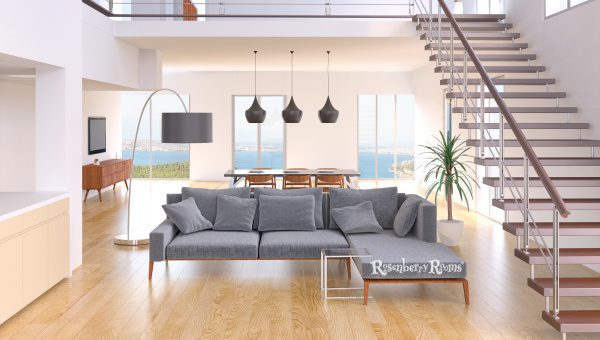
Adopting a minimalist design ethos can make your room feel larger, airier, and more comfortable. This involves removing clutter, selecting essential furniture pieces, and maintaining a clean aesthetic.
Let’s delve into some key aspects of creating a simple yet stylish minimalist space.
The first step in achieving a minimalist design is to declutter. Ensure you only hold onto items that serve a purpose or truly resonate with you, and let go of unnecessary objects that only consume valuable space. Remember, less is more when it comes to minimalism. Keep surfaces clear and tidy for optimal visual openness.
Choose multi-functional furniture that can serve multiple purposes while reducing clutter – think storage beds or coffee tables with compartments. These items will lend themselves well to your minimalist style while offering practicality.
Minimalist decor usually employs a monochromatic or neutral color palette to maintain simplicity and harmony throughout the space. Stick with whites, grays, beiges, and creams for your walls, furniture, and accessories. Pops of color can come through plants or wall art; however, be sure to limit their quantity.
A crucial aspect of minimalist design is utilizing open spaces effectively by allowing ample room between furniture pieces and avoiding overcrowding. This creates an airy atmosphere that promotes calmness and tranquility.
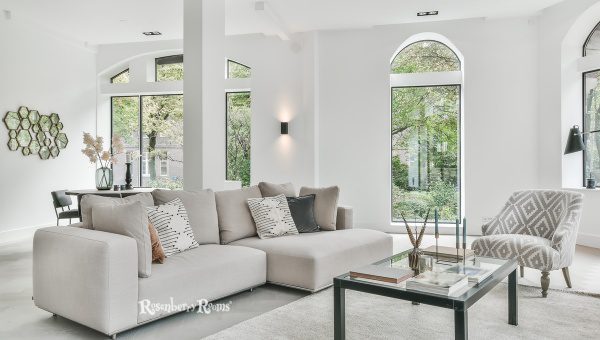
Creating an all-white design can be a visually appealing approach to make a small living space feel airier and more open. A carefully thought-out whitewashed color scheme invokes sensations of freshness, lightness, and calmness. Here are some insights into how you can elegantly implement this timeless decor concept in your living area.
With countless variations available, it’s crucial to select white shades that suit your decor and ambiance. Consider warmer off-whites (like cream or ivory) for a cozy feel, or cooler hues (such as chalk white) for a minimalist touch. Mixing shades can also add visual interest and depth to your design.
While all-white is inherently minimalistic, introducing different textures and patterns will prevent the look from becoming monotonous. Try incorporating:
In an all-white room, carefully selected accents can create visual focal points by introducing contrast. Introduce natural elements like wooden furniture, small metallic accents, neutral-colored artwork, or glass accessories to add depth without overshadowing the pureness of the white design.
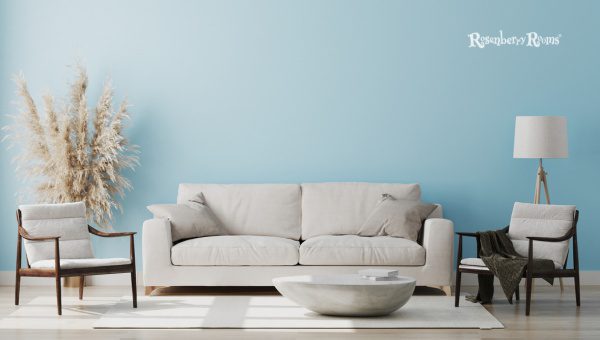
The color palette you choose can significantly impact the room’s perception of size and overall atmosphere. While warmer tones create a cozy and inviting space, using cool shades can make your room appear larger and more open.
This color scheme brings a sense of tranquility and spaciousness, enabling you to create an environment that feels refreshing and airy.
Let’s discover some tips on how to incorporate cool shades into your décor:
When selecting cool colors for your living space, prioritize blues, greens, and greys. These colors evoke feelings of calmness while enhancing visual expansion with their lighter tones. Consider incorporating varying shades of these colors for added depth.
There are various ways to introduce cool shades into your design:
To prevent the room from feeling cold or impersonal, balance the cool colors with touches of warmth. You can achieve this by adding wood accents, natural textures like woven baskets, or even a few warmer-colored accessories.
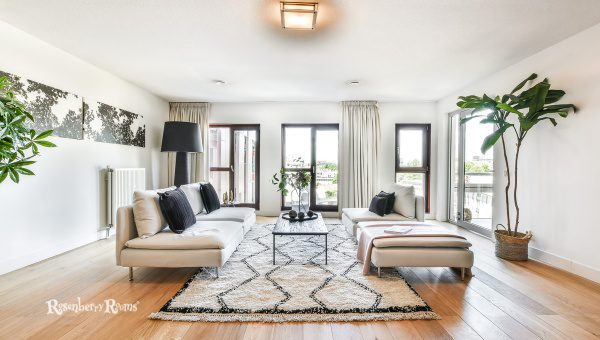
One of the critical aspects of living in a small space is keeping it tidy and clutter-free. In order to manage this, it’s crucial to master the art of reorganization. A well-designed living space that maximizes storage and promotes functional living can greatly impact your overall quality of life.
Here are some tips on achieving a triumphant tidy space:
Start by taking an inventory of what you own, categorizing items into similar groups. This will help you identify duplicate possessions or items that can be discarded. Determine which items should stay in the living room, be relocated to another area, or be donated.
Exploit every inch of available space by incorporating clever storage solutions such as built-in shelves, wall-mounted storage units, under-seat storage ottomans, or vertical bookcases. Think outside the box – even transform staircases or window sills into creative storage areas.
Choose furniture pieces that serve more than one purpose. For instance, find a seating area that doubles as a bed or a side table with added storage compartments.
To avoid clutter build-up, establish a daily tidying routine. Allocate a few minutes each day to putting things back in their designated spots, clearing surfaces, and ensuring your living space remains orderly.
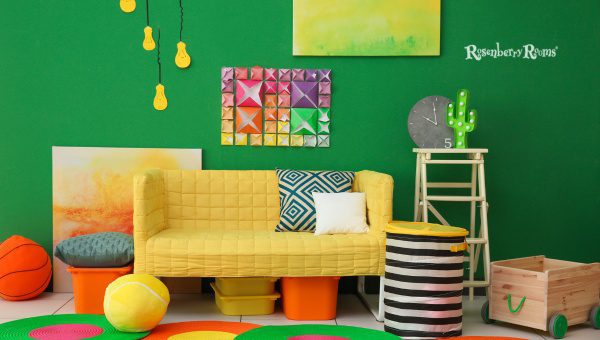
Using a restricted palette not only unifies your living area but also keeps the space light and airy. Below are some tips on how to effectively limit your palette and create harmony in your compact living room:
Begin by selecting one or two main colors for walls, flooring, and large pieces of furniture. You can never go wrong with neutral colors such as white, beige, or light gray as they create a sense of openness. Apart from these, opt for earthy tones or pastel shades for a serene and inviting ambiance.
Introduce one or two accent colors to break up the monotony and deemphasize the limited space. Use these sparingly on decorative elements like throw pillows, rugs, curtains, or wall art. Ensure that accents complement the primary color scheme while adding visual interest to your living room.
Boost depth and character in your small living space by layering textures instead of adding more colors to the mix. Combine different fabrics (e.g., linen, velvet), natural elements (e.g., wood, stone), and metallic touches (e.g., gold, silver) for a rich tactile experience.
Controlling your color palette is key when designing a small living area that feels cozy without appearing cluttered. By streamlining your color choices while still incorporating elements of depth through accents and textures, you will seamlessly fuse functionality and style – making the most out of your compact space!
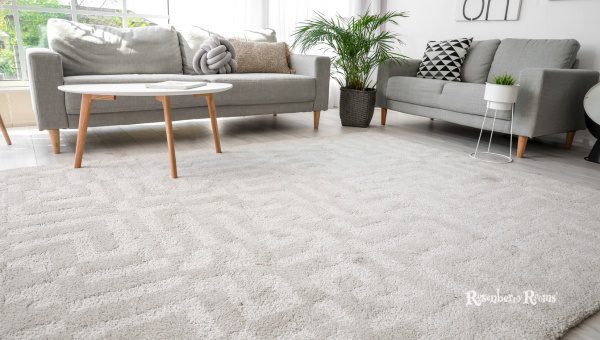
A well-chosen rug or carpet can do wonders in anchoring a room’s overall look, but it’s crucial to select the right color when working with a small space. One tactic that pro interior designers recommend is opting for neutral rugs and carpets to maintain a sense of unity and harmony throughout your living area. Here are some reasons why you should consider this approach:
By using neutral tones like beige, cream, or gray for your rugs and carpets, you create a seamless flow between furniture items and floor coverings. This results in an uninterrupted visual effect that makes the room feel more expansive than it actually is.
A key advantage of neutral rugs and carpets is their versatility. They provide an ideal canvas for you to experiment with accent colors through cushions, artwork, or even wall paint—allowing you to switch up the look of the room without having to replace the rug or carpet.
Neutral palettes never go out of style, ensuring that your living space maintains its chic appeal across seasons (and trends!). Plus, they easily adapt to changes in your personal taste or design preferences over time.
Incorporating neutral rugs and carpets will not only increase visual spaciousness but also enhance your small living area’s overall aesthetic value. With these insights, you’ll be well-equipped to harmoniously tie together your space and create the perfect welcoming atmosphere in your quaint and stylish home!
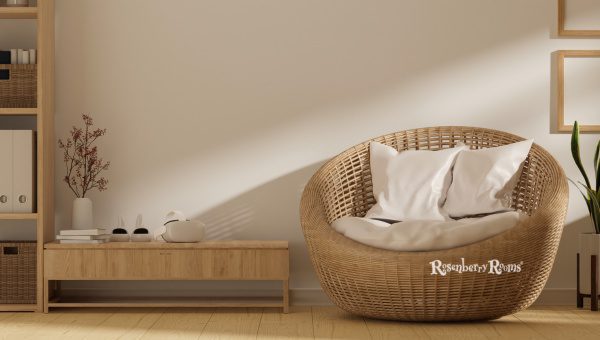
It’s time to break free from conventional design strategies and think outside the box when it comes to arranging your furniture. Welcome to the world of furniture floatation, a concept that transcends standard home organization and ushers in a new era of creativity!
Furniture floatation is all about challenging traditional room layouts by placing key pieces away from walls and creating versatile, dynamic, and eye-catching spaces. This technique can drastically change the way your room looks and functions – making it unrecognizable from its previous state.
To effectively experiment with furniture floatation, there are several factors worth considering:
Floating Islands: Incorporate an “island” of floating sofas and chairs in large living rooms with ample space. This creates an inviting conversational area that still leaves plenty of open areas around it.
Angles & Diagonals: Place your couches or chairs diagonally in relation to each other for a more dynamic aesthetic that adds both visual interest and functional value.
Spontaneous Seating: Introduce unconventional seating options like poufs or floor cushions apart from traditional sofas; it adds versatility and allows you to easily rearrange the room layout, in turn, adapting to your needs.
Don’t be afraid to take risks and experiment-pushing your creativity is what makes the furniture floatation concept so exciting! Allow yourself to explore unconventional arrangements and witness how even the smallest shifts can lead to remarkable transformations.
Maximizing space and style in your small living area is more manageable than you thought. By incorporating various interior design techniques—from using floor mirrors, and optimizing natural light sources to creating focal points—you will witness drastic improvements in your space’s aesthetics.
Remember that our homes should always feel comfortable regardless of their size. Do not hesitate to experiment with different furniture arrangements, color schemes, and unique décor ideas until you find the perfect balance between functionality and style. The key is to think creatively and implement the expert advice of professional interior designers in your own living space.
It takes time, patience, and imagination to achieve a chic haven tailored to your taste while also remaining highly efficient. So stay inspired by continually seeking out new ideas and the latest trends in interior design. Remember, it’s not about the size—it’s about what you do with it. Happy decorating!